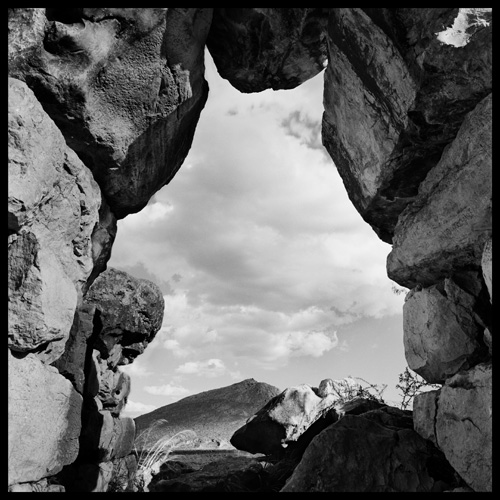
Galerie Zur Stockeregg Stockerstrasse 33 8022 Zürich Suisse
n the exhibition entitled "Spaces", Zur Stockeregg Gallery features two outstanding Swiss photographers: Christian Vogt and Daniel Schwartz. The works of both artists are explored from an angle of spatiality - the term "space" being used in a broader sense, thus comprising both nature and interiors as well as adhering to spatial and temporal extension.
Christian Vogt and Daniel Schwartz - how different are both their pictorial languages and their choices of motives! Yet, in one aspect, the oeuvres of these two photographic fixed stars are congruent, after all: both result from the extensive examination of a particular field of photographic interest. Vogt and Schwartz take the time to find the perfect setting; neither would press the release button repeatedly on the same subject to select the best picture from a series of similar shots. Instead, both artists commit to the tradition of black-and-white photography, where the taking of a picture must be preceded by a focused quest for the ideal setting.
Every photograph by Christian Vogt (*1946) is comparable to the tip of an iceberg: it is the visible part of an emotionally perceivable whole. Consequently, in the series "Naturräume" ("Open Spaces"), the artist is not interested in the meticulous rendering of the flora, but rather in the impact of the organically interwoven space on the beholder and his emotional reaction to it. Vogt's settings seem to be chosen to render orientation impossible: No bright sky is visible, allowing the eye to escape the thicket; instead, the missing horizon hampers the assessing of the spatial dimensions and forces it to unrestingly wander about in the picture. Where space opens up and encroachment into the depth seems possible, the eye gets lost in the denseness of the shrubs; the panoramic view intensifies the impression of being surrounded and swamped even more. Intoxicated by the essence of the landscape, the beholder remains hypnotized and bereft of all sense of time. - Where the significance of Vogt's open spaces is based on the dense information content of the selected view, his "Innenräume" ("Interiors") captivate the eye by their striking immediateness. Here, the panoramic view allows the artist to show several adjoining rooms in only one picture and, thus, depict contemporaneity. Hence, Vogt's horizontal interiors are, if nothing else, spaces of time.
The time factor looms large in the works of Daniel Schwartz (*1955), too. However, the spaces of time he refers to tend to span hundreds of years: Already the early works of the widely travelled reportage photographer - we are delighted to present several hitherto unexhibited works - reflect his interest for the history of mankind. Schwartz comments on the coexistence of man and nature mostly in a melancholic manner: In his photographs, the Great Wall of China or the scaffolded Erechtheion on the Acropolis - both outstanding remains of former advanced civilizations - attest to the vain human attempts to build (or to preserve) for eternity. In a different picture, a pine-tree stands as a symbol of rootedness, while some wheels, propped against its stem, represent the human pursuit of technological and cultural progress; here, the artist presents space as an allegory for the antagonism of movement and standstill. Schwartz is a master in using unagitated rhetoric to convey profound topics. In his works, temporal, natural, and cultural spaces collide.
Paulina Szczesniak, February 2010

